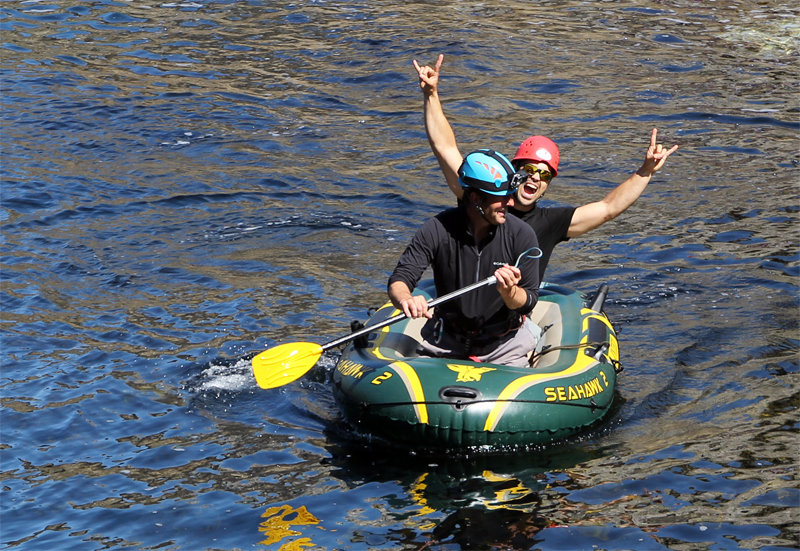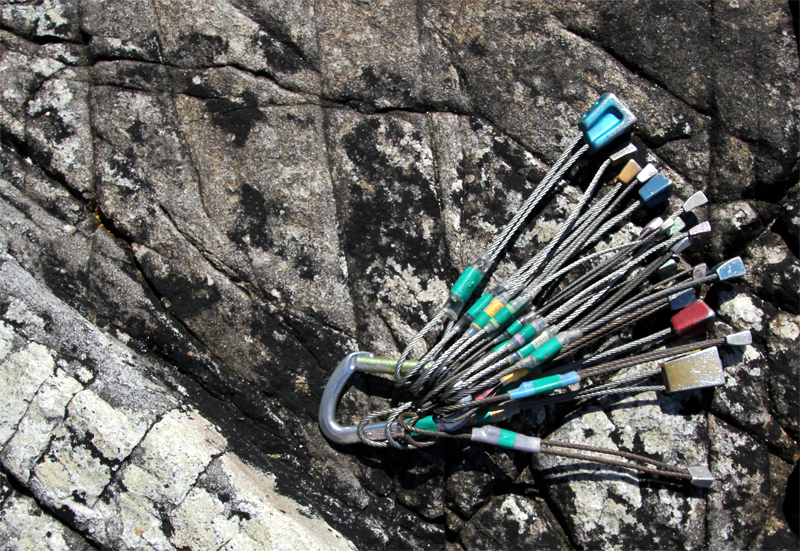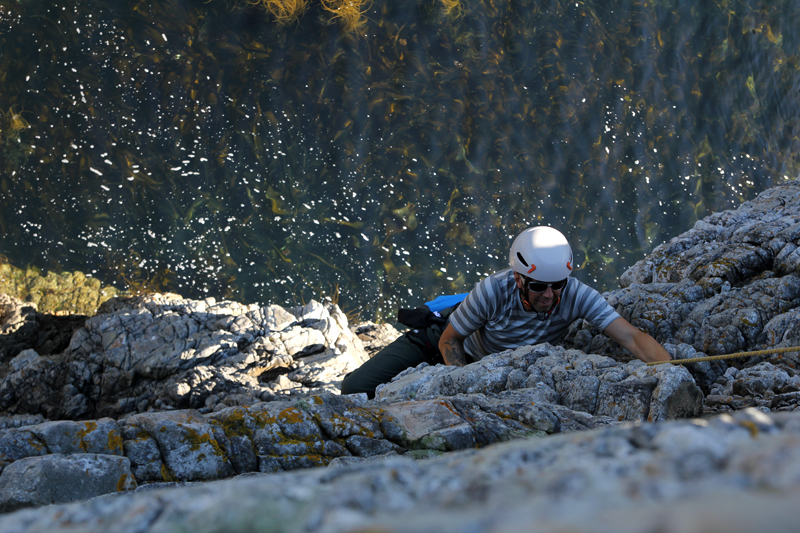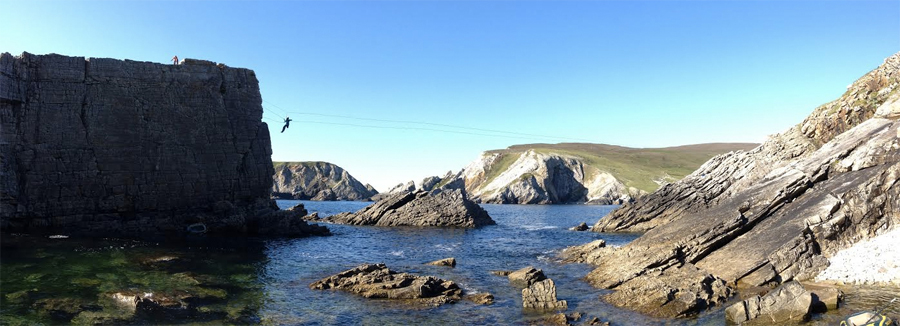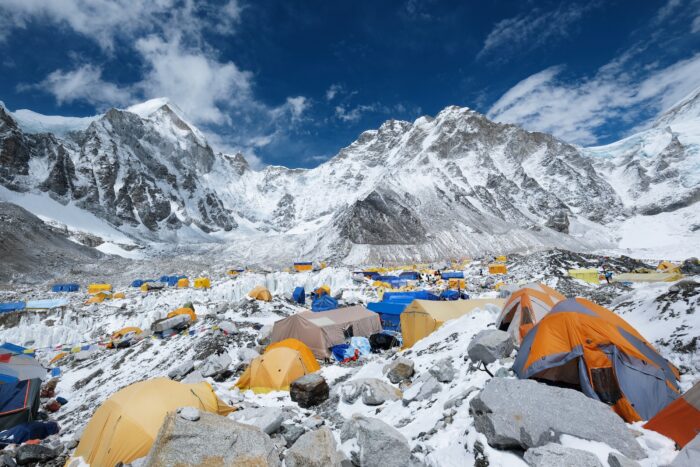
Waves crashed on a rocky shore. The tide was high and still rising. “Jump in the boat!” my guide shouted.
Soon we were bobbing on a stretch of cold water. Kelp swirled below. With climbing shoes and a backpack on I leaned forward to view a rock pillar looming ahead.
It was a Sunday morning in Ireland. I was on the country’s west coast to explore and test gear with a group from Columbia Sportswear and three local guides.
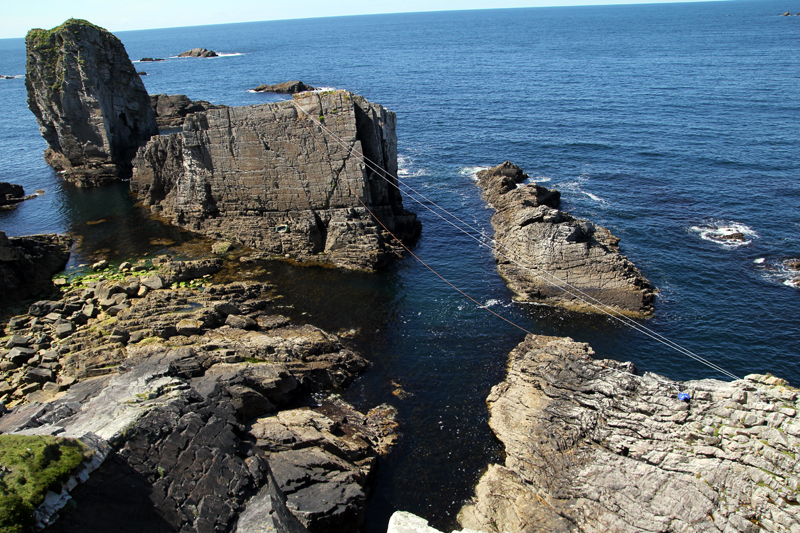
“Careful stepping out,” my climbing guide, Iain Miller, noted. He steadied the raft against kelp-covered rocks. “The brown slime is slippery.”
Our objective was an 80-foot sea stack. Like a stranded ship, the blocky formation was beached just off land. Its flat top, a summit surrounded by water, was a goal of the day.
Sheep chewed on green hills back on the shore. The ocean stretched away, a dark plane under a sunny sky.
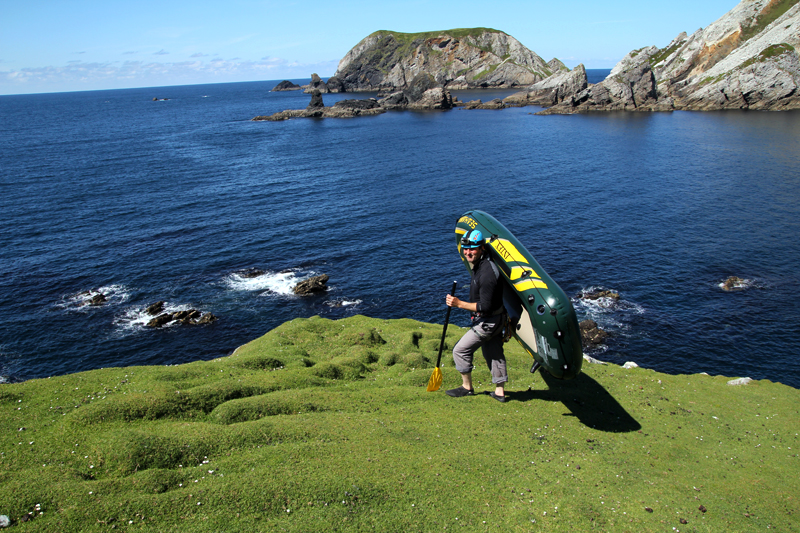
It took some serious gear — pack rafts, paddles, climbing shoes, helmets, webbing, and 300 meters of rope — but our guides from Unique Ascent had a plan.
More Photos Of Sea Stack Climbing On Page 2
We’d boat to the sea stack, climb up one of two routes on its face, then as an adrenaline bonus the climbers would take an elevated Tyrolean traverse back to dry land.
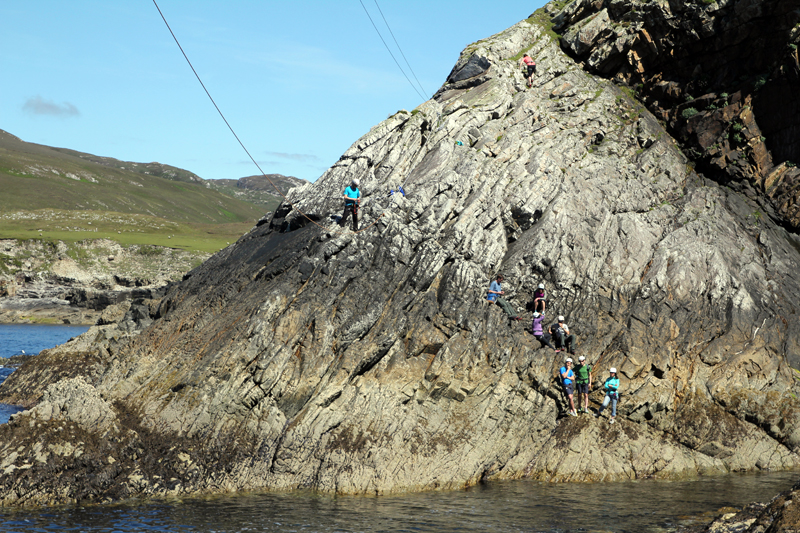
I’ve long been intrigued by sea stack climbing. Creaking pillars of stone stranded over ocean water are rare and exciting rock climbing objectives.
In Ireland, where the west coast stretches for hundreds of miles, sea stacks dot the view. The stone on our climb, a formation called Berg Stack, was solid and surprisingly dry.
